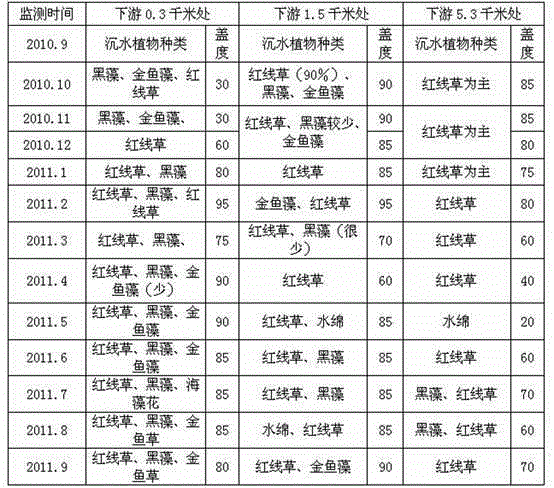A river ecological restoration method using recycled water as the main water source
A technology for reclaiming water and river channels, applied in water resources protection, chemical instruments and methods, multi-stage water/sewage treatment, etc., can solve problems such as difficulty in implementation, failure to ensure good recovery of submerged plants, large hydraulic gradient, etc., and achieve saving Operation and maintenance costs, stable ecological restoration effect, and self-sustaining effect
- Summary
- Abstract
- Description
- Claims
- Application Information
AI Technical Summary
Problems solved by technology
Method used
Image
Examples
Embodiment Construction
[0015] The present invention will be described in further detail below, but the present invention is not limited in any way, and any transformation based on the present invention falls within the protection scope of the present invention.
[0016] The main reason for the destruction of urban river ecosystems is the pollution from urban sewage. The most common reason is that the river is used as a part of the urban sewer, and the urban sewer is directly connected to the river, and the urban sewage is discharged into the river, which leads to an increase in the content of organic pollutants in the river, a decrease in dissolved oxygen, and even a long-term hypoxic state. Plants cannot respire, eventually leading to the demise of submerged plants. As the main body of the river aquatic ecosystem, once the submerged plants disappear, the river ecosystem will collapse.
[0017] The collapsed river ecosystem can be rebuilt. If the pollution is eliminated, the external conditions fo...
PUM
 Login to View More
Login to View More Abstract
Description
Claims
Application Information
 Login to View More
Login to View More - R&D
- Intellectual Property
- Life Sciences
- Materials
- Tech Scout
- Unparalleled Data Quality
- Higher Quality Content
- 60% Fewer Hallucinations
Browse by: Latest US Patents, China's latest patents, Technical Efficacy Thesaurus, Application Domain, Technology Topic, Popular Technical Reports.
© 2025 PatSnap. All rights reserved.Legal|Privacy policy|Modern Slavery Act Transparency Statement|Sitemap|About US| Contact US: help@patsnap.com



